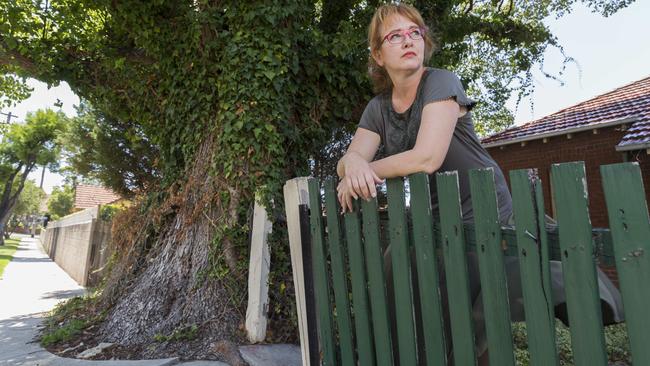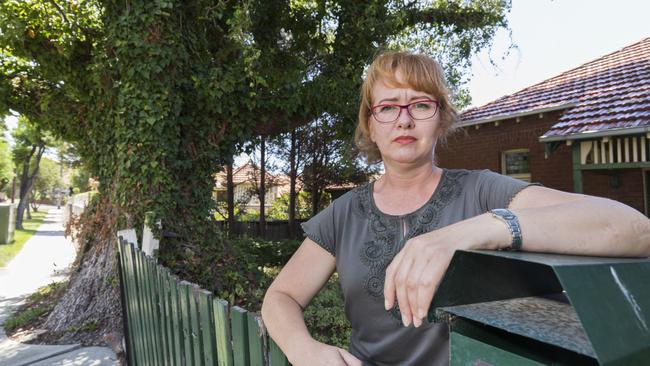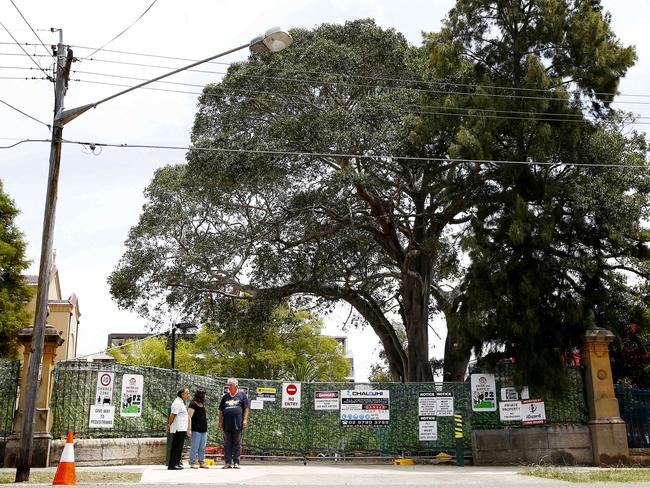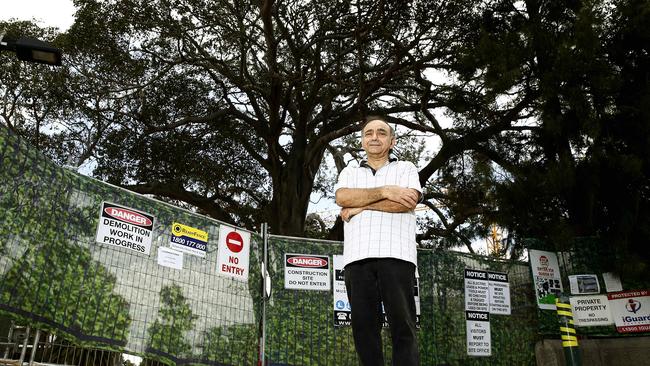Residents divided as tree removal changes are aired in the inner west
SUPPORTERS of a major overhaul of tree chopping rules in the inner west hope it brings about an easier process to have dangerous trees removed from their properties, while critics fear it could lead to a spike in developers or harbourside residents chopping trees to improve their views.

Inner West
Don't miss out on the headlines from Inner West. Followed categories will be added to My News.
THEY provide oxygen, shade, privacy and habitat, but the humble tree is not without conflict.
The inner west is divided over a major overhaul of tree chopping rules designed to strike a balance between the natural environment and the community’s ability to enjoy it.
Supporters are hoping the Inner West Council review brings about an easier process to have dangerous trees removed from their properties, while critics fear it could lead to a spike in developers or harbourside residents chopping trees to improve their views.
Debate from both sides of the argument dominated last week’s Inner West Council meeting when the review of the council’s tree removal guidelines, put forward by Deputy Mayor Julie Passas, was approved with Labor and independent support.
“My main concern is that I’ll be held liable if a pedestrian trips or falls.”-Resident Linda Viskovic
Haberfield homeowner Linda Viskovic was among the dozens of residents who turned out in support of the changes after multiple attempts to have a dangerous camphor laurel, a noxious weed, removed from her front yard.
The appeal was also personal after her brother died from injuries he sustained from tripping on the tree’s bulky root system in 2009.

“The tree is about 30-40 years old — it’s massively overgrown and it’s a safety risk for pedestrians,” she said. “The roots have uplifted the pavement higher than the council’s own guidelines but we still haven’t been able to have it removed. My main concern is that I’ll be held liable if a pedestrian trips or falls.”
Cr Passas said frustrations at the application process had led to many residents taking matters into their own hands, either through poisoning trees or illegally removing them.
Other issues highlighted by residents were trees impacting fences, dropping limbs on homes or damage from council trees next to private homes.
“We get just as many people writing us to wanting to save trees that are under threat.”-Cr Louise Steer
The council guidelines state trees can be removed because of age, health and the stability of the tree as well as any safety concerns.
Mayor Darcy Byrne said changes by the State Government have placed the benefit to determine application “in the hands of a very small number of council officers” and planning panels.
“We need to come up with a system where instead of deciding if a tree is healthy, we decide if it’s appropriate,” he said.
The review will also aim to align the development controls plans set by the former Leichhardt, Ashfield and Marrickville councils applying to tree removal. Each plan has separate benchmarks for the height, width and size of trees which require approval to be removed or pruned.
Rochelle Porteous, one of five Greens councillors who opposed the review, believes any changes should ensure there are valid reasons to have a tree removed.
“I have seen many tree removal applications on the Balmain peninsula which have really been about achieving better views or getting more development on a site,” she said.
“I do think we can improve the process but we have good risk management.”
Greens councillor Louise Steer said she was not supporting any policy that removed protections for healthy public trees.
“WestConnex has already cut down more than 1000 trees and the Sydney Metro will do the same - we need to protect trees not chop them down,” she said.
“We get just as many people writing us to wanting to save trees that are under threat.
“The urban forest is the lungs of the inner west - without it we would have 20% more heat.”
Figures obtained by the Courier show there were 340 trees removed on private properties in the Inner West Council area last year, while 1040 new trees were planted.
The council said many of the issues around dangerous trees were due to “inappropriate” varieties planted 30-40 years ago.
The council approved 85 per cent of removal applications over the 12-month period.

Branches, views and sunlight at the root of legal stoushes
Residents are waiting up to two years to have their tree disputes resolved in lengthy legal appeals against councils or their neighbours.
Recent cases in the Land and Environment Court reveal the extent some landholders are going after their initial tree removal applications were rejected by council authorities.
An Annandale landowner spent 16 months challenging Inner West Council to have a liquidambar removed on the boundary of Hunter Baillie Church. The roots of the tree had damaged a driveway and fence and the applicant feared the 16m tree posed further risk to a property next door.
“It’s been a shock to the community”-Themis Theo
While the court found the removal was “justified”, many appeals are rejected – last year, another Annandale resident unsuccessfully tried to have three trees removed from a nature strip he claimed were damaging his fence.
The lengthy appeals are also costly as residents hire independent arborists and engineers to carry out studies on trees, which are then used in court to justify the removal.
The introduction of the Trees Act in 2007 has also seen a flood of neighbourly spats escalate into court action with views, sunlight and fallen branches common areas of dispute.
The Act allows the court to order removal or punning when trees “severely obstruct” views, or if they are planted “to form a hedge”. The key question in all appeals is – “does the retention of a tree pose a threat to life or property?”
Anger as figs retire early
Sprawling trees lining Victoria St in Ashfield have always made the Theo family proud to call the neighbourhood their home.
There were 23 Port Jackson figs in total, standing up to 20m tall, and were believed to have been planted in the 1920s.
That was until last month when tree loppers reduced the number to just one to make way for a new retirement village and 133-bed aged care facility.

“The first we found out about it was when the contractors arrived and starting cutting them down,” resident Themis Theo said.
“It’s been a shock to the community because the trees provided shade, canopy. It’s changed the whole atmosphere of the area. We may as well be living on the highway.
“If a resident wanted trees that size cut down they wouldn’t be allowed, but developers seem to get the green light.”
Inner West Council said the removal was “unavoidable” due to the overriding approval of the development by the State Planning Assessment Commission in 2011.
Stockland, which is developing the site, said the loss would be offset by 387 trees planted through the project. But it’s little solace for the Theo family, which say the canopy will “take years to regrow”.
“It will never be like it was,” Themis said.
How they add value to suburbs
Money really does grow on trees, with increased leaf canopy cover being linked to higher property prices.
For every 10 per cent increase in the canopy coverage within the street corridor, the value of properties increased by an average of $50,000 across three suburbs, according to research from infrastructure firm AECOM.
In Annandale, the firm’s report shows increased tree coverage added $60,761 to property values.
Report co-author James Rosenwax said: “If we don’t put a financial value on trees there is less incentive to protect them when looking at the cost benefits of new roads, bridges or buildings.
“Unfortunately, the humble street tree is often in conflict with other forms of infrastructure and development.”
Report co-author Roger Swinbourne said loss of tree canopy also increased the heat island effect, removed air pollution filtering and exposed drainage systems to increased volumes of water during heavy rainfall.
Streets with 28 per cent canopy coverage in Annandale were also found to be four degrees cooler than those with 20 per cent cover.
IN OTHER NEWS



